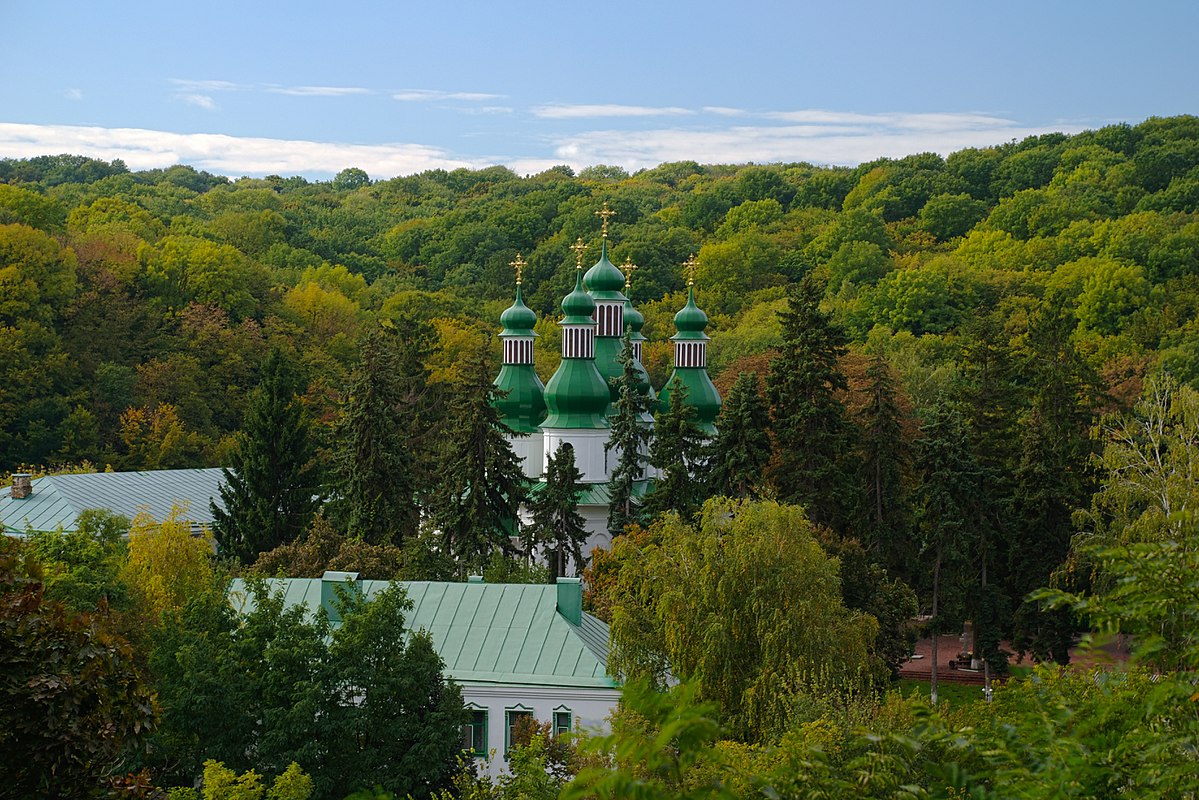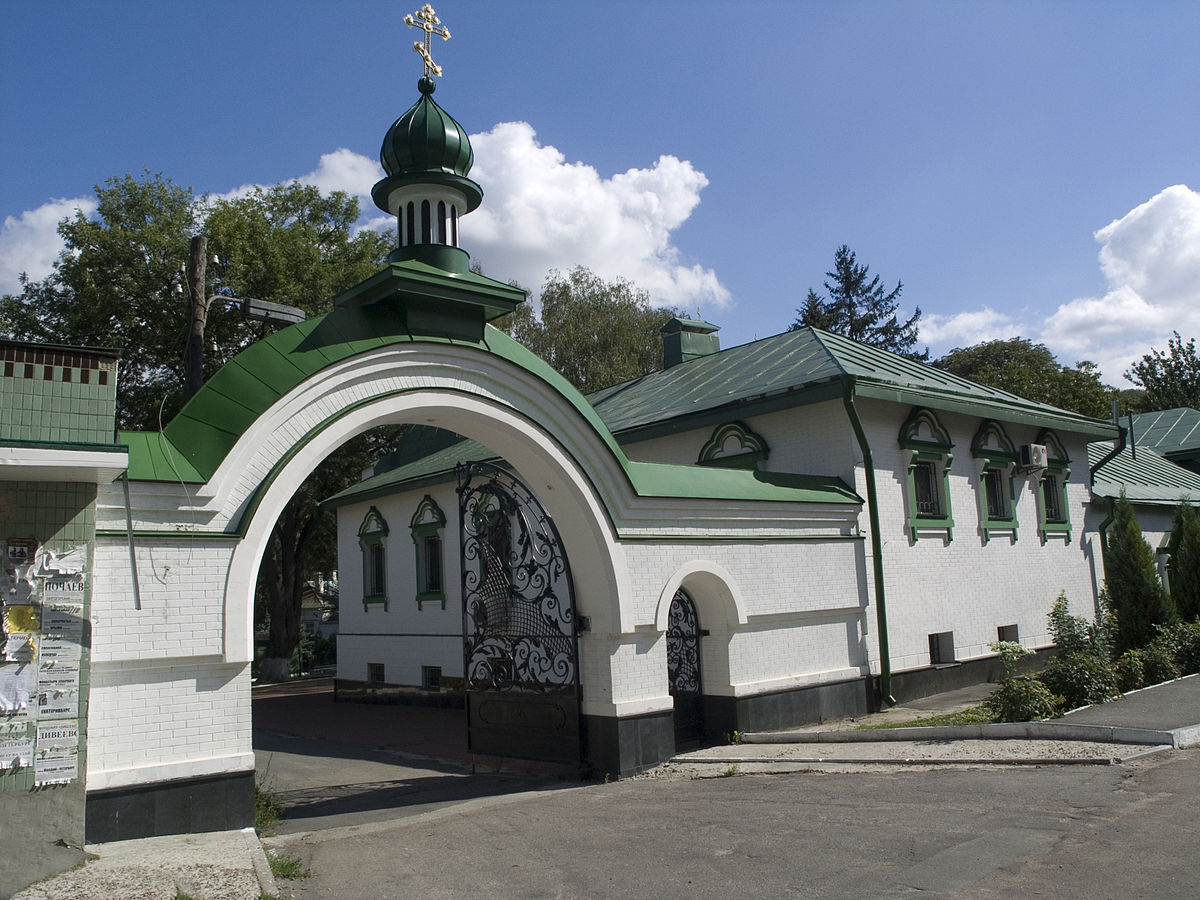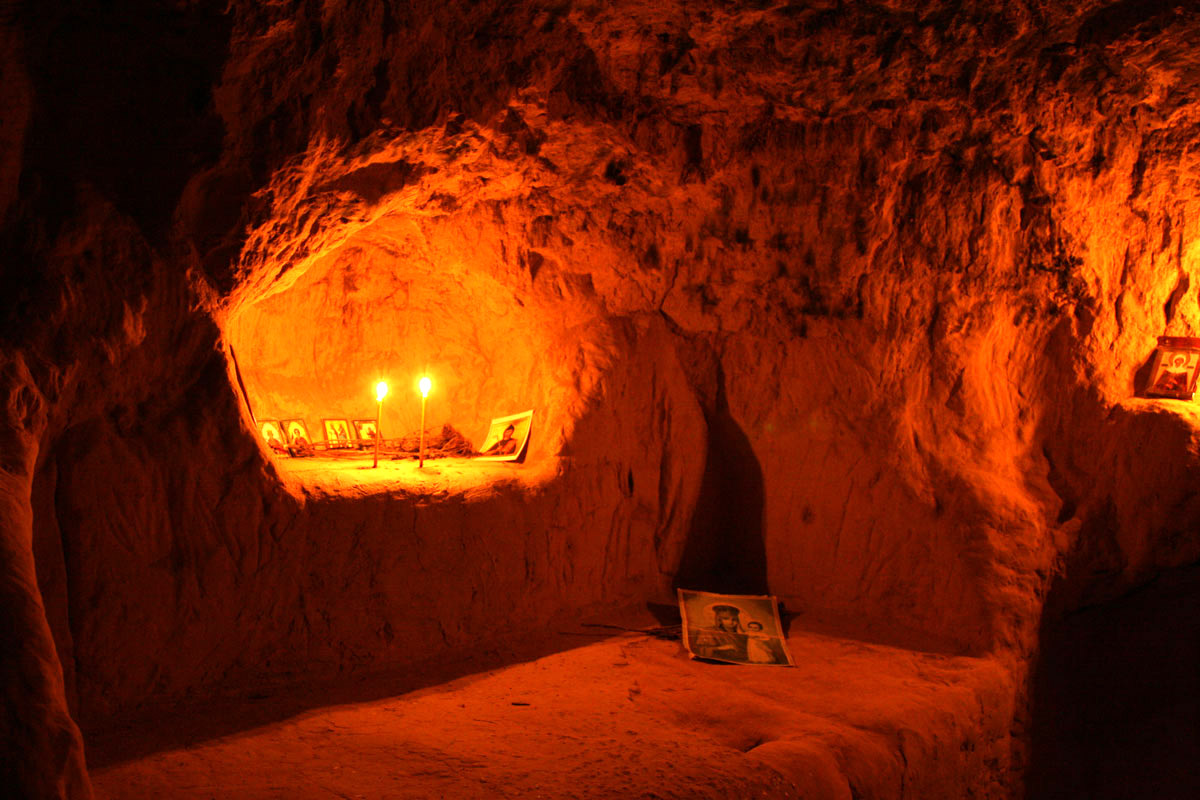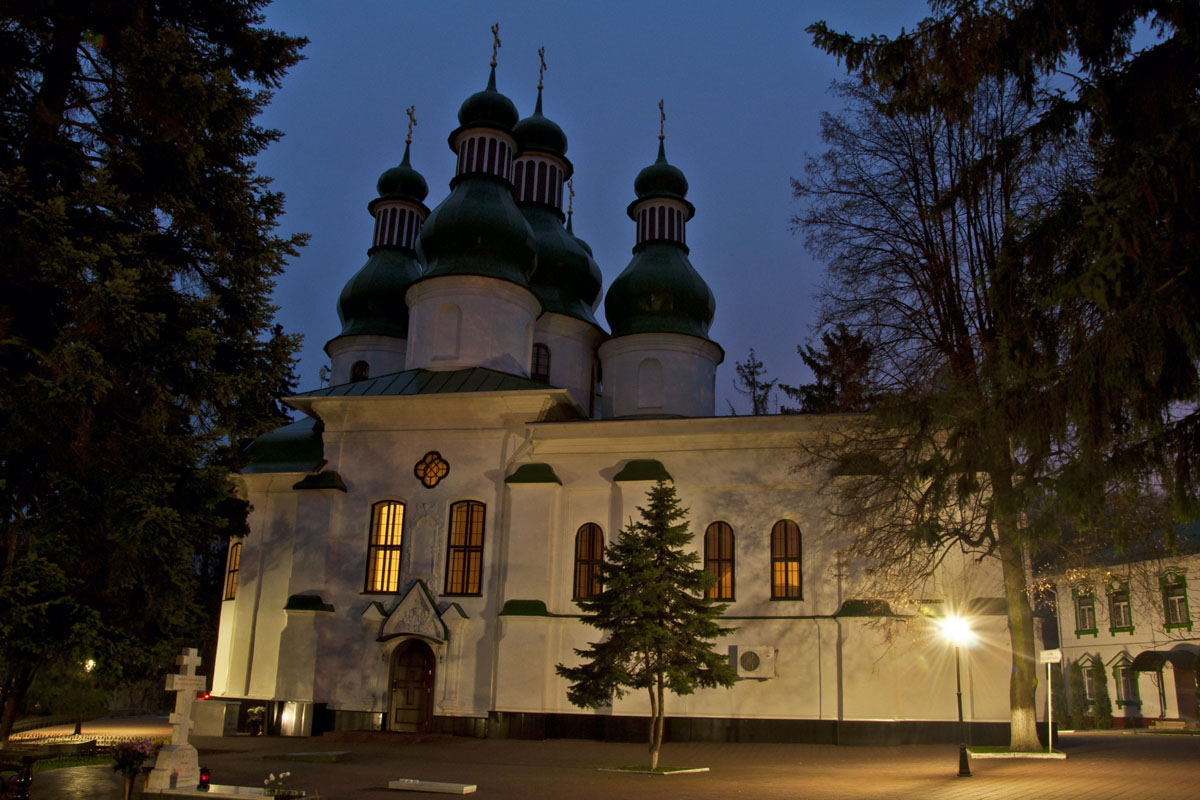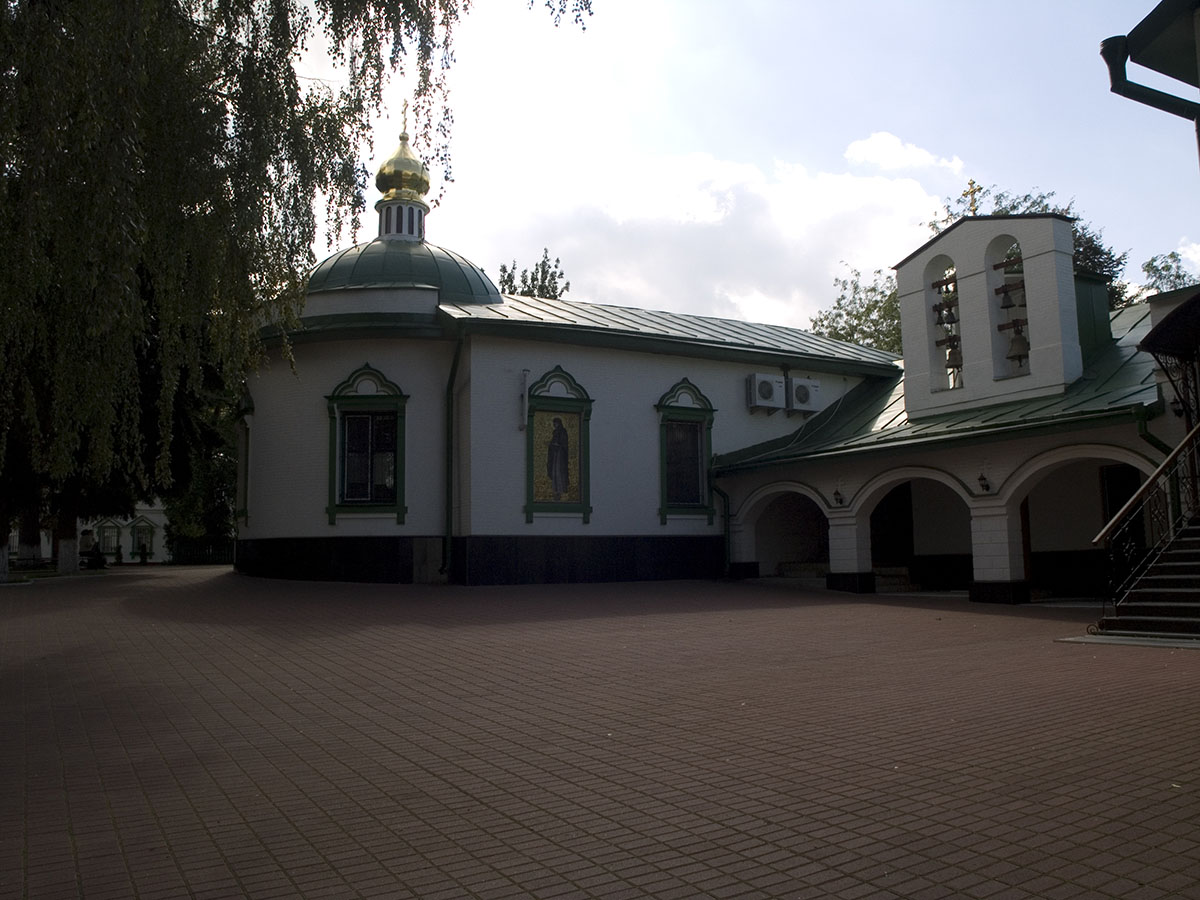Holy Trinity Kitaevsky Monastery (better known as Kitaevskaya Hermitage) is an Orthodox monastery in Kitaevo. The documented history of the monastery begins in 1716, and back in the 19th century Kitaevo became a popular place of pilgrimage. The most famous of the Kitaev elders were Dosifei and Theophilus. Stefan Demyanovich Kovnir in 1763-1768 built one of the last monuments of Ukrainian Baroque in the monastery – the Trinity Church.
Hermitage was famous for its gardens, which were tended by experienced gardeners from the monastic brethren. In the vicinity of the Kitaevskaya hermitage (between Goloseev and Kitaev) in the 1860s, the Bulgarian farm was founded, where the former Uniate Archbishop Joseph Sokolsky, with the permission of the Metropolitan, planted a vineyard. By the end of the 19th century, the architectural ensemble of the hexagonal monastery courtyard had finally taken shape. It included a brick Trinity Church, a 45-meter bell tower, a refectory with the churches of the Twelve Apostles and the Three Russian Saints – Peter, Alexy and Jonah, the abbot’s house, a fraternal building, a two-story home for elderly clergy, cell buildings and a brick fence with an economic gate. Since 1898, the Lavra candle factory operated on the territory of the economic yard. In 1904, the Church of St. was added to the new building of the almshouse. Seraphim of Sarov.
In the 1920s, the temples continued to operate, but the hermitage itself no longer belonged to the monks: a children’s colony was located in the cells, and some of the buildings were used by agricultural institutions. In 1930, the Kitaevskaya Hermitage was finally liquidated, the territory and buildings were transferred to the All-Union Research Institute of Fruit and Berry Farming. The bell tower was dismantled in 1932, other buildings were badly damaged during the Second World War. After the war, the Republican Training and Production Plant for Beekeeping and the Ukrainian Research Institute of Plant Protection were located in the desert.
After restoration in the early 1990s, the Trinity Church was transferred to the UOC (1992). After archaeological research in 1993-94, caves were equipped and the temple of St. Dosithea. Since 1996, the monastery has the status of an independent monastery. The Kitaevskaya hermitage is unique in that there in the Church of the Twelve Apostles the relics of all 12 apostles are collected (with the exception of St. John the Theologian, who was taken with his body to Paradise, and the traitor Judas Iscariot, who fell away from the apostolic face), as well as the relics of the righteous saints Joachim and Anna (parents of the Most Holy Theotokos) and righteous Zechariah and Elizabeth (parents of John the Baptist) and many other great saints. Kitaevo, where the monastery is located, is adjacent to Goloseevsky National Natural Park.
Where is the Kitaevskaya Hermitage Monastery?
Kitaevskaya street, 15
